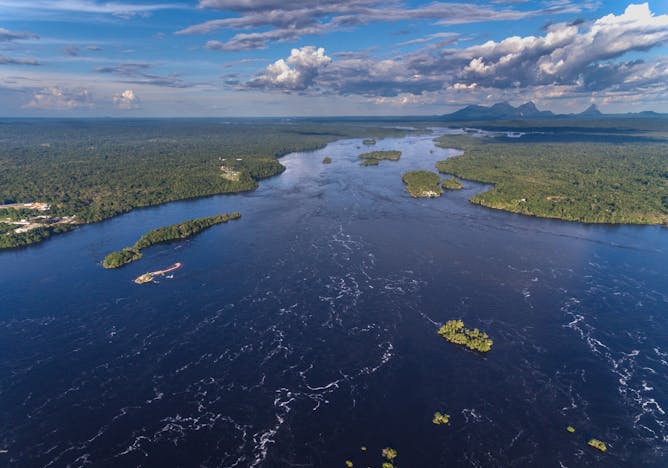|
|
|
Editor's note
|
|
The move by gun rights activist Cody Wilson to make digital blueprints for 3D printing of guns available is controversial. But legal scholar Timothy D. Lytton of Georgia State University says there’s nothing new about an effort to exploit loopholes in government gun regulations. What is new, writes Lytton, is what this attempt may mean for gun laws in the future. And as the debate over printable guns rages, the public forgets the
significant role the federal government played in supporting – and heavily regulating – the U.S. firearms industry, according to historian Lindsay Schakenbach Regele.
Did you know that in Amazonia, some closely related bird species live on opposite sides of the region’s big rivers, never to be found together? Evolutionary biologists have disagreed about the role these rivers played in the evolutionary history of the species they currently divide. Tropical biologist Luciano Nicolas Naka’s new study used the “molecular clocks” in birds’ own DNA to figure out whether rivers
created these pairs of related birds or just act as borders that keep them apart.
As genetic testing expands to consumers, new questions arise. What do people do when they learn they have a genetic mutation that could lead to a specific disease? This is especially hard to answer when testing for Alzheimer’s disease, for which no cures exist, writes Troy Rohn of Boise State University.
|
Naomi Schalit
Senior Editor, Politics + Society
|

|
|
Top stories
|

A 3D printed gun.
Mitch Barrie via Wikimedia Commons, CC BY-NC
Timothy D. Lytton, Georgia State University
Since the 1980s, anyone can purchase firearms without legal restrictions, in the form of parts kits. But there is an ominous difference between gun kit makers and the distribution of 3D gun plans.
|

Birds don’t fly across wide Amazonian rivers like the Rio Negro.
Marcos Amend www.marcosamend.com (for use with this article only)
Luciano Nicolas Naka, Harvard University
Rivers are natural boundaries for evolving populations. But scientists don't agree whether they create new species or just help maintain them. Research using birds' molecular clocks provides some answers.
|

Genetic testing is available to people who want to know if they carry a variant of a gene that confers susceptibility for Alzheimer’s. But knowing whether to get tested is hard.
Billion Photos/Shutterstock.com
Troy Rohn, Boise State University
Alzheimer's is not only the third leading cause of death in the U.S. but also the most dreaded diagnosis. Genetic testing can help determine susceptibility, but knowing whether to test isn't easy.
|
Politics + Society
|
-
B. Jessie Hill, Case Western Reserve University
A law professor writes "the future of Roe v. Wade looks tenuous." That gives more power to the states -- including four that have passed "trigger laws" to outlaw abortion if Roe is overturned.
-
Kevin Johnson, University of California, Davis
A 15-year-old fleeing violence in El Salvador came to the US in 1985. Her case set in motion a Supreme Court decision that would affect how authorities treat children in their custody for decades.
-
Cecilia Farfán-Méndez, University of California San Diego
Ciudad Juárez, on the US-Mexico border, has suffered high levels of deadly violence for over a decade. New suicide data reveals the severe mental health impacts of living with chronic violence.
|
|
|
|
|
|
|
|
|
|
Trending on site
|
-
Brandon Peters-Mathews, Stanford University
Are you sleep deprived? Don't worry. That might make the situation worse. Instead, make some simple adjustments, such as staying off digital devices an hour before bedtime.
-
Rachel Sullivan Robinson, American University School of International Service
The story of how Nigeria and Mississippi implemented comprehensive sexual education programs despite local opposition offers important lessons about how to boost adolescent sexual health.
-
Thomas Cronin, University of Maryland, Baltimore County
With superpowers other animals can only dream of, these crustaceans challenge sharks for the title of most amazing predator in the sea.
|
|
Today’s chart
|
-

 |
Jason Dedrick
Syracuse University
|
 |
Greg Linden
University of California, Berkeley
|
 |
Kenneth L. Kraemer
University of California, Irvine
|
| | | |
| |
|
|
|
|
|
|
|